Located at the foot of the mighty Himalayas, Badrinath Dham is in Chamoli district in the holy land of Uttarakhand, India. It not only has a spiritual significance but also is remarkable for its amazing natural landscape. Badrinath is one of the Char Dham pilgrimage sites and is visited by millions of devotees and tourists every year. The weather in Badrinath certainly changes a lot from season to season hence it is important to plan your visit accordingly. In this detailed guide, we will study the weather of Badrinath from the point of view of the month, so that you can select the most appropriate time for pilgrimage to this divine destination.
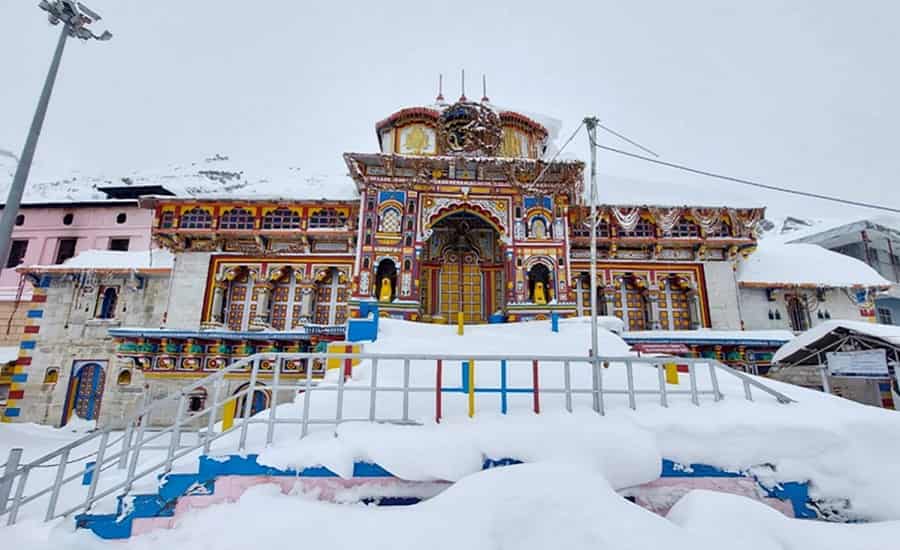
Experiencing the Seasons
May to June (Spring/Early Summer)
Weather Highlights
- May is the beginning of the tourist season in Badrinath. This period is characterized by cool weather, with daytime temperatures reaching 12°C and 18°C.
- Snow melts and the valley landscape becomes a colorful mosaic of blooming flowers, looking at it becomes a pleasure.
- During June the temperature varies from 18 to 20 degrees Celsius in the daytime and stays cool during the night.
- The opening of the roads at this time brings pilgrims and tourists to Badrinath, who have easier and more comfortable access.
July to September (Monsoon)
Weather Highlights
- Badrinath is under the monsoon season between July and September. During this moment, the area experiences more rainfall which leaves it more prone to landslides and road closures.
- Pilgrims and tourists should be careful if they are planning to visit the area at these times.
- The weather is variable with temperatures swinging between 18°C and 22°C during the day.
- Another frequent problem is landslides and transport disruptions, so it is advisable to check the weather forecast and road conditions before you travel.
October to November (Autumn)
Weather Highlights
- The fall is the best time to see Badrinath. The monsoon goes away leaving behind green hilly areas and blue skies.
- The maximum daytime temperatures are between 10°C and 13°C, whereas nights are colder with lows of -5°C to 5°C.
- This season is recommended for trekkers and nature lovers as less crowd and perfect weather conditions can be experienced at that time.
- At this time of the year, the Kedarnath Temple closes and the pilgrims shift their attentions to Badrinath.
December to February (winter)
Weather Highlights
- The harsh winter begins in December and ends in February in Badrinath. The daytime temperatures are around 5 °C, but the nights are even colder, with temperatures falling to -8°C and even lower.
- The entire region gets heavy snow cover and this makes it difficult to access it. The Badrinath temple is shut down during these few months, and the deities are brought to the nearby town of Joshimath at that time for worship.
- The winter season may be a nice period for sports related to snow, but one has to be prepared to face the extreme cold and the limited amenities available.
March to April (Pre-Summer)
Weather Highlights
- March is the beginning of the pre-summer period in Badrinath. The snow starts melting and the weather is getting warmer.
- Daytime temperatures vary from 5°C to 10°C, and nights are still cold. The roads leading to Badrinath start opening up, and pilgrims start reaching there as the temple gets ready to open for the summer.
- April brings more warmth, with daily maximum temperatures of 10°C to 12°C.
- This is the best time for nature enthusiasts to see the shift from winter to spring.
Temperature Ranges
To provide you with a better understanding, here are the temperature ranges for each month:
January:
- Daytime Temperature: -2°C to 5°C
- Nighttime Temperature: -8°C to -3°C
- Rain/Snowfall: Primarily Snowfall.
February:
- Daytime Temperature: 0°C to 6°C
- Nighttime Temperature: -7°C to -2°C
- Rain/Snowfall: Primarily snowfall.
March:
- Daytime Temperature: 3°C to 9°C
- Nighttime Temperature: -5°C to 0°C
- Rain/Snowfall: Low rainfall, with occasional snowfall.
April:
- Daytime Temperature: 6°C to 12°C
- Nighttime Temperature: -3°C to 2°C
- Rain/Snowfall: Low to moderate rainfall (around 45 mm), occasional snowfall.
May:
- Daytime Temperature: 8°C to 15°C
- Nighttime Temperature: 0°C to 5°C
- Rain/Snowfall: Moderate rainfall (around 90 mm), occasional snowfall.
June:
- Daytime Temperature: 12°C to 20°C
- Nighttime Temperature: 5°C to 8°C
- Rain/Snowfall: Moderate to high rainfall (around 180 mm).
July:
- Daytime Temperature: 14°C to 20°C
- Nighttime Temperature: 6°C to 10°C
- Rain/Snowfall: Monsoon season with heavy rainfall (around 345 mm).
August:
- Daytime Temperature: 15°C to 22°C
- Nighttime Temperature: 7°C to 10°C
- Rain/Snowfall: Monsoon season with heavy rainfall (around 315 mm).
September:
- Daytime Temperature: 11°C to 18°C
- Nighttime Temperature: 4°C to 10°C
- Rain/Snowfall: The monsoon continues with significant rainfall (around 250 mm).
October:
- Daytime Temperature: 7°C to 13°C
- Nighttime Temperature: 0°C to 6°C
- Rain/Snowfall: Rainfall decreases gradually (around 120 mm).
November:
- Daytime Temperature: 2°C to 8°C
- Nighttime Temperature: -5°C to 2°C
- Rain/Snowfall: Low to moderate rainfall, transitioning to snow (around 50 mm).
December:
- Daytime Temperature: -1°C to 5°C
- Nighttime Temperature: -6°C to -2°C
- Rain/Snowfall: Minimal rainfall, often snowfall.
Badrinath Dham Yatra Weather Travel Tips
- The weather of Badrinath always remains cold as it is situated at an altitude of 3000 meters. One should always carry sufficient woolen clothing no matter the season.
- By chance, if you are planning your Badrinath tour in monsoon then carry a sturdy raincoat or waterproof jacket to stay dry during sudden downpours.
- Always stay hydrated even at higher altitudes as dehydration can occur more rapidly.
- Gradually acclimatize yourself to the altitude of the region. Always carry altitude sickness medicines.
- You must have a small emergency first aid kit that has essentials like basic medicines, energy bars, whistles, flashlights, etc.
- Always stay updated on weather and road conditions before traveling to Char Dham Sites. Check local authorities or your accommodation for essential updates.
- Check Travel advisories before planning your trip and adjust your plans accordingly.
Conclusion
Badrinath’s weather varies significantly throughout the year, offering different experiences to travelers during each season. The best time to visit is typically during the post-monsoon months of October and November when the weather is pleasant, and the natural beauty of the region is at its peak.
Plan your trip carefully, considering the unique characteristics of each season. Whether you seek spiritual solace or a rendezvous with nature, Badrinath has something special to offer year-round.
FAQs
Q-1: Is Badrinath accessible in winter?
Ans: No, Badrinath is not accessible in winter due to heavy snowfall, and the temple remains closed during this period.
Q-2: What is the best time for the Badrinath Yatra (pilgrimage)?
Ans: The best time for the Badrinath Yatra is during the post-monsoon months of October and November.
Q-3: Are there any precautions to take during the monsoon season in Badrinath?
Ans: Yes, it’s essential to stay updated on weather forecasts and road conditions due to the possibility of heavy rainfall and landslides.
Q-4: Can I witness snowfall in Badrinath?
Yes, you can witness snowfall in Badrinath during the winter months of December to March.
Q-5: Are there accommodations available in Badrinath throughout the year?
Ans: Accommodations in Badrinath are limited and are mostly available from April to November. During the winter months, options are scarce.


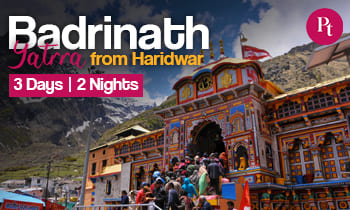
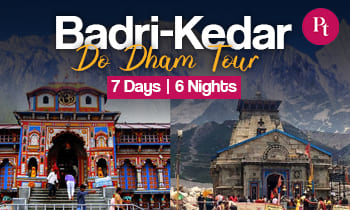
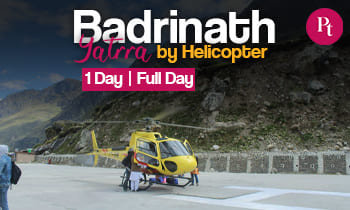
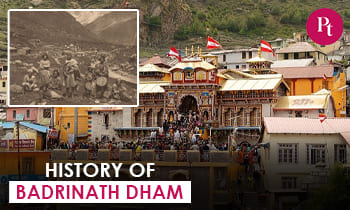
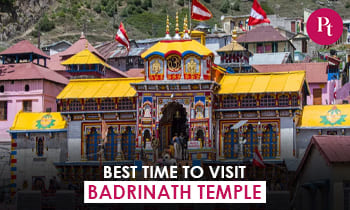
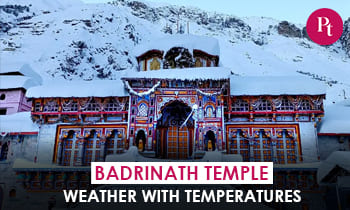

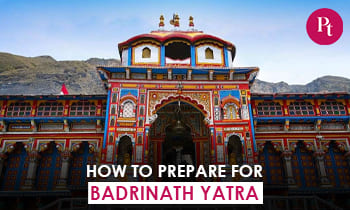
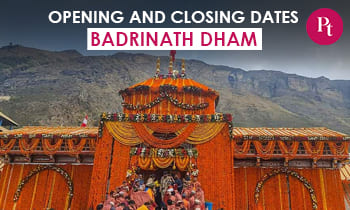


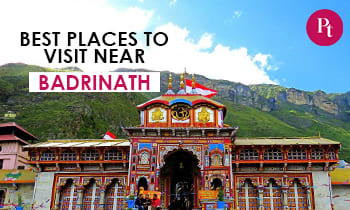
 Call
Call WhatsApp
WhatsApp Enquiry
Enquiry